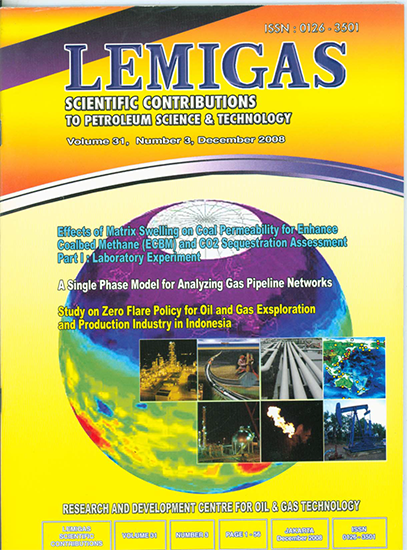SURFACTANT PROPERTIES EVALUATION FOR CHEMICAL FLOODING
DOI:
https://doi.org/10.29017/SCOG.31.3.1014Keywords:
Enhanced Oil Recovery, Chemical Injection, Winsar Type III - Micro-emulsionAbstract
The need of EOR techniques in the late field production period is essential to get the third wind of incremental oil. Chemical injections are proven technologies not only at the laboratory scale but also at the field scale which have been implemented in many parts of the world. Surfactant is an important chemical in this technology, which mostly has been used to reduce the capillary trap of the oil in the reservoirs. The selection of surfactant type which is suitable for a specific oil field to increase the oil production should fulfill the selection criteria. Laboratory works firstly should be done to evaluate the important properties based on the industrial standard procedures. These laboratory tests include compatibility test, aqueous stability test, phase behavior study, micro-emulsion viscosity, interfacial tension determination, thermal stability test, and filtration test.
References
Taber J.J., Martin F.D., Seright, R.S.,: “EOR Screening Criteria Revisited-Part 1 and Part 2: Introduction to Screening Criteria and Enhanced Recovery Field Projectsâ€, SPE Reservoir Engineering, Agustus 1997.
Berger P.D., Lee C.,: â€Improved ASP Process Using Organic Alkali†SPE 99581
Shanker P.K., Bae J.H., Enick R.M.,: “Salinity Tolerance and Solution Property Correlations of Petroleum Sulfonate-Cosurfactant Blends†SPE 10600
Delshad, M., Bhuyan, D., Pope, G.A., Lake, L.W.,: “Effect of Capillary Number on the Residual Saturation of a Three-Phase Micellar Solutionâ€, SPE/ DOE 14911.
Dwarakanath V., Pope A.G.,: “Surfactant Phase Behavior with Field Degreasing Solvent†Environment Science & Technology/ Vol. 34 No. 22. 2000.
Downloads
Issue
Section
License
Copyright (c) 1970 SCIENTIFIC CONTRIBUTIONS OIL AND GAS (SCOG)

This work is licensed under a Creative Commons Attribution 4.0 International License.
Authors are free to Share — copy and redistribute the material in any medium or format for any purpose, even commercially Adapt — remix, transform, and build upon the material for any purpose, even commercially.
The licensor cannot revoke these freedoms as long as you follow the license terms, under the following terms Attribution — You must give appropriate credit , provide a link to the license, and indicate if changes were made . You may do so in any reasonable manner, but not in any way that suggests the licensor endorses you or your use.
No additional restrictions — You may not apply legal terms or technological measures that legally restrict others from doing anything the license permits.














